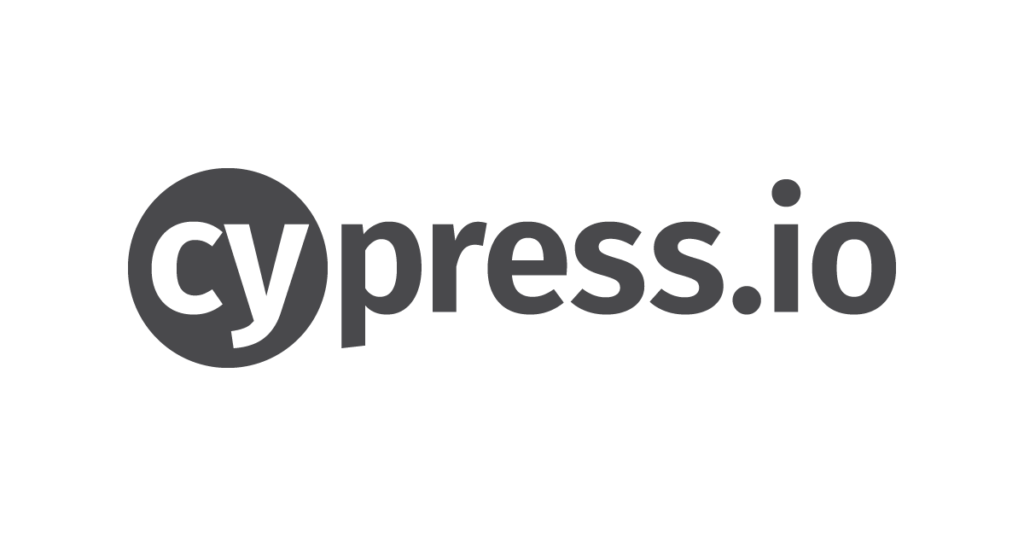SHARE
End to End Testing: Pros and Cons

Contents
Contents
In a digital era where mobile and web applications are more complicated than before, it is difficult to envisage software design without automated testing. Complex applications mainly depend on a network of supporting subsystems, such as third-party interfaces, UI and API layers, external databases, etc. Meanwhile, malfunctions with any of these components could mean disaster for the entire program. As a result, each layer and its related subsystems must undergo a test using “end-to-end Testing” pros and cons techniques; to guarantee the optimum performance of the entire system.
In situations where the application tested has a large number of components and dependencies, e2e tests will be conducted with all parts attached; since it’s the most crucial testing process that addresses the most precise end-user scenarios. However, end-to-end testing makes it challenging to identify specific failures, takes a lot of time, and necessitates more hardware than integration and unit testing.
In this article, we will explain end-to-end testing, the pros, and cons of e2e tests, why we do e2e testing, components of end-to-end testing, and specific tools for e2e testing. Also, we will dwell on how it differs from regression & unit testing.
What is end-to-end testing?
End-to-end testing, also known as e2e testing, is a testing approach that verifies a software lifecycle from beginning to end. The primary objective of e2e tests is to mimic an end user’s -application experience – to ensure that all interconnected dependencies, components, and other integrated parts function as intended.
In web applications, end-to-end tests actually automate the process of opening a browser and using the application as an end-user would. Clicking buttons, submitting forms, visiting different URLs; almost anything that a web user would do can be accomplished with browser automation and e2e testing.
In this domain, the entire program is examined for critical functionalities, including interacting with other systems, databases, interfaces, networks, and other applications.
End-to-end testing vs. unit testing
End-to-end testing is a unique form of software testing that examines the whole piece of software from beginning to end and how it integrates with external interfaces. In contrast, unit testing involves testing each distinct software component independently.
During end-to-end testing, the tester examines the software program from the user’s viewpoint. In unit testing, the developer confirms the functionality of individual pieces of source code.
These two types of tests are vastly different from one another. Unit tests try to isolate the object or unit under test. This means they try to be as different as possible about testing a piece of code while minimizing interactions with other pieces of code.
E2E tests take a very different approach. E2e testing takes a behavior-driven development approach. Instead of testing individual pieces of code, they test the actual end experience that a user sees when using the application.
Why do we write e2e tests?
Generally, e2e tests deepen the test coverage to include various sub-systems while testing the entire system flow. Likewise, they can identify problems with subsystems and reduces the likelihood that a flaw in one of them may corrupt the whole system.
Unit tests and integration tests are not always comprehensive when it comes to testing a system as a whole. E2E tests by nature cover a system from end-to-end by loading a browser and automating user interactions, mimicking what a visitor would actually experience when using your website.
E2E testing examines the software’s layers, including its interfaces and final endpoints, from the front end to the back end. It ensures that the product undergoes user testing in live environments. Hence, it enables “risk avoidance” by;
- Detecting more issues
- Increasing test coverage
- Enhancing the software’s overall productivity
- Examining the overall flow of software applications
When is e2e testing appropriate?
End-to-end testing processes are performed when there is a systemic issue or when the outputs are not what was anticipated. The team must then document and examine all available data to pinpoint the cause of the problem.
In today’s programming world, whether or not to use e2e tests is decided on a case-by-case basis. While e2e tests are extremely attractive in theory, some of the downsides of e2e tests make them less desirable to certain software teams. In particular, e2e testing can be a painful pattern in large, monolithic software applications. This is because they are generally slower than other types of tests, and the pain felt from the slowness of e2e tests increases with the size of a codebase.
How do you write a good e2e test?
Writing an excellent e2e test starts with following the proven standards in the industry. E2E tests are often written in Gherkin syntax, which is useful for transferring business requirements into a codebase. Here is an example of the Gherkin syntax that many e2e tests use to explain the requirements of an e2e test:
In a test-driven development approach, often the e2e test is the first thing written for a new feature. Getting a red e2e test gives you a point of reference to always come back to as you continue developing your feature.
Here are some things to think about when utilizing e2e tests in your codebase:
Creating User Functions
First, build the user interfaces (functions) for the application. Meanwhile, the steps listed below will make this process simple;
- Compile a list of all the software features (components) you intend to see in the application, along with any related supporting systems
- Take proper records of all output and input data
- Keep track of all operations made with each program function
- Ascertain all connections between user functions
- Clearly define functional dependencies
- Sort categories depending on how easily functions can be reused
Building conditions
Based on the user functions, build appropriate conditions by following the steps below;
- Define condition sets for every user function
- Write a condition that integrates timing, data, etc.
- Find all additional elements that will have an impact on the user function
Creating test cases
- Always build different test cases for every functionality and user function
- For each of the conditions, perform the test scenarios separately
- Execute the tests and record all findings
What are some popular end-to-end testing tools?

Popular e2e testing tools in the industry include:
- Cypress: Cypress is a UI application that you can install on your computer and use to write tests. Naturally, tests can run in a headless browser environment with Cypress as well. Cypress is a popular option for e2e testing today.
- Selenium: Selenium is a browser automation tool. It is commonly used for e2e testing, but it can be used to automate any browser interactions. Selenium WebDriver, in particular, is good for creating test automation suites.
- Puppeteer: Puppeteer is a Node.js library created and maintained for Google. Instead of focusing on supporting many different browsers, Puppeteer is focused on providing automation tools specifically for Google Chrome.
Any three of these options will commonly be found in an e2e automation testing suite.
What is the benefit of end-to-end testing?
End-to-end testing ensures that the entire software program is production-ready, section by section. Thus, some rationales as to why it benefits your enterprise’s success are listed below;
- E2E testing gives higher confidence to developers. That is, confidence that the application is working correctly, and confidence that any changes that a developer has to make to a codebase didn’t break another piece of functionality. Having additional confidence in your codebase allows developers to write code faster, and it allows newer developers to contribute to the codebase with lesser fear that they are breaking functionality that they don’t know about somewhere within a system.
- E2E testing lowers costs and staffing efforts. Because E2E testing can take care of a lot of processes that would be required by manual QA testers, it can automate some of the tedious aspects of the QA job.
- E2E testing enhances test coverage
- E2E testing detects more bugs and boosts application efficiency
What are the disadvantages of end-to-end tests?
Some of the drawbacks facing end-to-end testing include the following;
- Slow execution
- Flaky or fragile tests
- Extremely difficult to debug
- Lack of ideal test environment
These disadvantages or cons to e2e testing should not be taken lightly. Slow execution can mean a slower time to integrate new features or bug fixes into your application, and slow build and release times, and these problems are greatly exacerbated as your application gets larger and larger.
Flaky tests are also typically a pain with e2e tests. It is not uncommon for e2e tests to pass in one environment and fail in another. Some common reasons why e2e tests might fail include:
- Different internet speeds
- Different computer speeds
- Browser timeouts
- Request timeouts
- Indeterminate AJAX request resolution
Keep in mind these common reasons for e2e tests to fail is important when writing tests.
Frequently Asked Questions: End-to-End Testing
In this section, we will briefly proffer answers to some notable questions asked by e2e enthusiasts in this field. A few of them are:
Why are e2e tests flaky?
E2E tests can be flaky for many different reasons. A flaky test is one that passes sometimes and fails others. This trait is unattractive because it can mean that failures in tests can be hard to replicate sometimes. This means that you start to question whether a feature is working or not. Some common reasons for e2e tests to be flaky are internet or computer speed, browser timeouts, request timeouts, timezones, etc.
What is UAT life cycle?
User Acceptance Testing (UAT), also known as “application testing,” is the last phase of any change request lifecycle or software application development. It’s the final test phase of any development process to ascertain whether the “software program” performs as intended in actual settings.
Is end-to-end testing UAT?
E2E and UAT are similar because; testers usually replicate end-user behavior. However, e2e tests are performed by the quality assurance (QA) or technical testing team, while business users mainly carry out UAT.
Are QA and UAT the same?
QA and UAT perform different objectives. As such, UAT ensures that customers (users) receive the product they desire, while QA strives for error-free software.
How long should E2E tests take?
Undoubtedly, speed is a significant menace when running advanced E2E tests, as it can take between 4 to 8 hours to complete an extensive suite of application tests. But, an ideal test shouldn’t last more than 2 hours.
What are the three main types of testing?
In the software development industry, the three main types of testing are System testing, Integration testing, and Unit testing.
What is end-to-end testing in selenium?
This refers to an e2e test performed using the selenium testing tool.
Is end-to-end testing the same as regression testing?
No, they aren’t the same. For instance, in e2e tests, test cases are usually created, whereas in regression testing -test cases already exist. Also, e2e testing detects issues linked with the integrations or subsystem, while regression testing ensures that -overall changes to the system don’t affect the functionality of existing code.
Wrapping Up
End-to-end testing is a software “testing” procedure that examines an application’s flow from beginning to end. This testing often imitates the actual user situations to verify the software and its dependencies for data integrity.
Custom Software Development Services
Flatirons Development offers custom development services tailored for your unique business needs.
Get the CEO's Take
Handpicked tech insights and trends from our CEO.
Custom Software Development Services
Flatirons Development offers custom development services tailored for your unique business needs.
Get the CEO's Take
Handpicked tech insights and trends from our CEO.

What is IT OT Convergence? Streamlining Operations for Efficiency
Flatirons Development
Oct 28, 2025
Secure Mobile App Development: Prioritizing Data Protection
Flatirons Development
Oct 22, 2025
What is Data Ingestion? Definition, Types, and Best Practices for Efficient Data Processing
Flatirons Development
Oct 16, 2025
Enterprise Computing: Transforming Business Operations
Flatirons Development
Oct 09, 2025
Explore the Top Embedded Systems Examples of Today
Flatirons Development
Oct 04, 2025
Best Manual Testing Tools to Boost Your Software Quality
Flatirons Development
Sep 28, 2025
What is IT OT Convergence? Streamlining Operations for Efficiency
Flatirons Development
Oct 28, 2025
Secure Mobile App Development: Prioritizing Data Protection
Flatirons Development
Oct 22, 2025
What is Data Ingestion? Definition, Types, and Best Practices for Efficient Data Processing
Flatirons Development
Oct 16, 2025
What is IT OT Convergence? Streamlining Operations for Efficiency
Flatirons Development
Oct 28, 2025
Secure Mobile App Development: Prioritizing Data Protection
Flatirons Development
Oct 22, 2025
What is Data Ingestion? Definition, Types, and Best Practices for Efficient Data Processing
Flatirons Development
Oct 16, 2025
What is IT OT Convergence? Streamlining Operations for Efficiency
Flatirons Development
Oct 28, 2025
Secure Mobile App Development: Prioritizing Data Protection
Flatirons Development
Oct 22, 2025
What is Data Ingestion? Definition, Types, and Best Practices for Efficient Data Processing
Flatirons Development
Oct 16, 2025